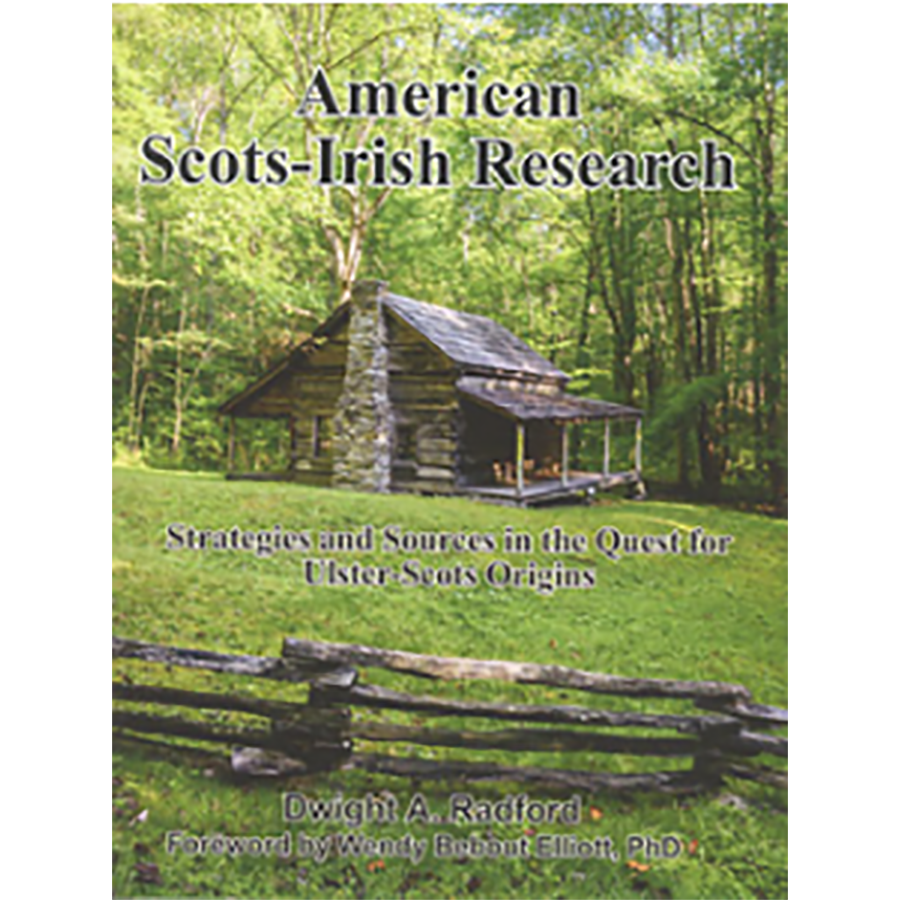American Scots-Irish Research: Strategies and Sources in the Quest for Ulster-Scots Origins
Couldn't load pickup availability
The Scots-Irish present the ultimate challenge in implementing unconventional research methods because of the scarceness of documentation for the group before immigration to the United States. The information herein is limited to Ulster, where most Scots-Irish were born, and mainly underscores records and strategies from the U.S. that will assist in proving or at least indicating the birthplace of an ancestor from that province.
The historic province of Ulster includes counties on both sides of the post-1921 border, which today separates Northern Ireland and the Republic of Ireland. They are Antrim (NI), Armagh (NI), Cavan (IRE), Donegal (IRE), Down (NI), Fermanagh (NI), Londonderry (Derry) (NI), Monaghan (IRE), and Tyrone (NI). The focus of this book is on non-Catholic families, because the majority of what is termed Scots-Irish or Ulster-Scots belonged to a denomination not of the Catholic tradition. Yet most people think of the Ulster-Scots as being Presbyterians, which is also a little narrow. Many came as Anglicans, Brethren (Plymouth) and Gospel Hall, Methodists, Moravians, Mormons, and Quakers. The people who did arrive as Presbyterians became unchurched for a couple of generations on the frontiers of the U.S. because few, if any, clergy or schools were in a number of areas. The Scots-Irish would convert to or reunite with the Presbyterian Church during the revivals on the frontiers, leaving the impression that they always had been Presbyterian.
Search tactics are indispensable in finding answers to investigations as difficult as those for the Scots-Irish and other groups. American Scots-Irish Research: Strategies and Sources in the Quest for Ulster-Scots Origins concentrates on strategies. When researchers know how to use documents effectively, even some with no apparent relevance can be helpful. As an example, tax books do not have birthplaces, and so novices probably would not look at them. For seasoned researchers and as his mentors taught him, tax rolls can be a most important tool for discerning who is who, and where and when they were living.
This is not a book for those seeking effortless answers. It is intended to disclose research strategies that perhaps have not been considered before. Dwight asks that researchers not think in linear terms. If Scots-Irish research, especially in the eighteenth and early nineteenth centuries, were easy, the place of origin in Ulster would have been found long ago. Linear thinking, which seems to promote the notion of the existence of a document stating a place of birth when, in fact, it was never created, typically will hinder research and waste time. In most cases, an entry noting where someone was born in the 1700s is not in an archive in either Ireland or Northern Ireland. Therefore, it remains a U.S. research problem. The assertion is not that Irish sources cannot be used effectively, but that records of births for documenting most Ulster-Scots during the 1700s are scarce. For 1800s immigrants, registers of birthplaces may be in Ulster. The same is true from the U.S. side of the research process, yet even that depends on the period, the sources, and the circumstances in which a family found itself.
This volume outlines and details the tactics that may be necessary to find your Scots-Irish place of origin. Besides the professional strategies, Dwight lists numerous websites and databases. The bibliographies found throughout the volume are extensive. Both black and white and color maps, charts and illustrations are found from cover to cover - eighty-four in all!
Dwight A. Radford
2020, paper, 284 pp.
ISBN: 9781628592801
121-FR0151
